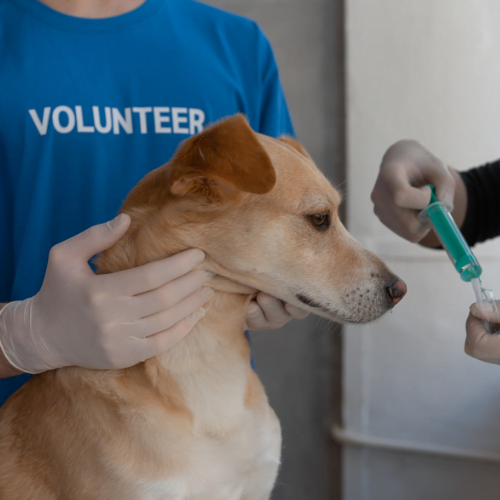Estimated reading time: 12 minutes
Owning a pet comes with many joys, but it also involves various expenses that can quickly add up. For pet parents who need financial help with pet bills, it’s important to know the resources available to you. In this comprehensive guide, we’ll discuss the costs of pet ownership, share preventative measures to reduce pet bills, introduce financial assistance programs, and provide practical tips to save money on pet expenses.
I. Understanding the Costs of Pet Ownership

Before we dive into how to find help with pet bills, let’s first explore the various costs associated with pet ownership.
A. Veterinary expenses
Routine veterinary care, such as check-ups, vaccinations, and dental cleanings, can contribute significantly to pet bills. Additionally, emergency visits or surgeries can become quite costly.
B. Food and nutrition
High-quality pet food is essential for your pet’s health, but it can also be expensive. Special dietary requirements or supplements can add to this cost.
C. Grooming and hygiene
Professional grooming, bathing, and nail trimming services are important for maintaining your pet’s well-being but can add to your expenses.
D. Training and pet care services
Training classes, boarding, and pet-sitting services are often necessary but can become a financial burden.
E. Toys and accessories
Toys, beds, collars, and other pet accessories may seem like small expenses, but they can add up over time.
II. Preventative Measures to Reduce Pet Bills

Taking preventative steps can help reduce the overall cost of pet ownership and minimize the need for financial assistance. By investing time and effort in your pet’s well-being, you can avoid some costly issues down the line.
A. Routine vet check-ups
Regular veterinary check-ups are essential for maintaining your pet’s health. These visits can help detect and address potential health issues before they become more severe and expensive to treat. Make sure to schedule annual or bi-annual check-ups, depending on your pet’s age and breed.
B. Vaccinations and preventive medications
Keeping your pet up-to-date on vaccinations is crucial for protecting them from common diseases. Additionally, providing them with preventative medications for heartworm, fleas, and ticks can save you money in the long run by avoiding costly treatments for these conditions. Consult your veterinarian for the recommended vaccination schedule and preventive medications for your pet.
C. Proper nutrition and exercise
Feeding your pet a well-balanced diet and ensuring they get regular exercise can help prevent obesity and other health issues. Obesity can lead to complications such as diabetes, heart disease, and joint problems, which can be expensive to treat. Consult your veterinarian for guidance on the appropriate diet and exercise regimen for your pet.
D. Pet insurance options
Investing in pet insurance can help cover unexpected veterinary expenses, reducing your out-of-pocket costs. Pet insurance plans vary in coverage and price, so it’s essential to compare options and choose the one that best fits your pet’s needs and your budget. Some plans offer coverage for accidents and illnesses, while others may also include preventive care.
E. DIY grooming and pet care
Learning to groom your pet at home and mastering basic pet care tasks can save you money on professional services. Simple grooming tasks such as brushing, nail trimming, and ear cleaning can help prevent health issues that might require costly treatments. Additionally, learning about basic pet first aid can help you address minor injuries at home, potentially saving you an expensive trip to the vet.
F. Spaying and neutering
Spaying or neutering your pet can prevent unwanted litters, reduce the risk of certain health problems, and minimize behavioral issues that could lead to costly damage or liability. Many animal shelters and rescue groups offer low-cost or even free spay/neuter programs, making this preventative measure more affordable for pet owners.
III. Financial Assistance Programs for Pet Bills

If you need help with pet bills, several financial assistance programs are available to support pet owners in various circumstances. From government assistance to non-profit organizations, there are resources that can help alleviate the financial burden of pet expenses.
A. Non-profit organizations and charities
- National organizations: Some national organizations, like the Humane Society, offer resources for pet owners in need of financial assistance. They provide a comprehensive list of organizations that can help with veterinary expenses, spaying/neutering, and pet food.
- Local organizations: Local animal shelters, rescue groups, and pet food banks can help with pet bills or provide low-cost services. Many local shelters offer low-cost spay/neuter programs, vaccination clinics, and discounted adoption fees. Reach out to organizations in your community to learn about available resources.
B. Veterinary payment plans and discounts
Many veterinary clinics offer payment plans or discounts for low-income pet owners, seniors, or military personnel. Ask your vet about these options and whether they partner with any assistance programs. Some clinics may also provide reduced fees for routine care through wellness plans or preventive care packages.
C. Crowdfunding and online fundraisers
In times of financial hardship, turning to crowdfunding and online fundraisers can be a lifeline for covering your pet’s medical expenses. These platforms allow you to share your pet’s story, connect with a supportive community, and raise funds to help with unexpected costs.
- GoFundMe: GoFundMe is a popular crowdfunding platform where you can create a campaign, set a fundraising goal, and share your pet’s story with friends, family, and social media networks. GoFundMe allows you to collect donations and access the funds quickly to cover your pet’s bills.
To increase the success of your crowdfunding campaign, consider sharing regular updates on your pet’s condition, posting photos or videos, and expressing gratitude to your supporters. A heartfelt, engaging story can resonate with others and inspire them to help you cover your pet’s medical expenses.
D. Breed-specific assistance programs
Some breed-specific organizations offer financial aid for pet owners with specific breeds. These programs often focus on genetic or breed-related health issues and may provide funding for treatments or surgeries. Search for breed-specific clubs or rescue organizations to see if any assistance programs are available for your pet.
E. Grants and foundations
Various grants and foundations provide financial assistance to pet owners in need. These organizations often focus on specific health conditions, emergencies, or veterinary care. Examples include RedRover Relief, The Pet Fund, and Brown Dog Foundation.
IV. Tips to Save Money on Pet Expenses

Implementing these practical tips can help you save money on pet expenses, reducing the need for financial assistance and allowing you to focus on enjoying your time with your pet.
A. Shop smart for pet supplies
Look for sales, use coupons, and compare prices at different retailers to get the best deals on pet supplies. Online retailers often have competitive prices and may offer additional discounts through promotions or free shipping. Don’t forget to check clearance sections or bargain bins for discounted items.
B. Leverage loyalty programs and discounts
Many pet supply stores and online retailers offer loyalty programs that provide exclusive discounts and rewards for frequent shoppers. Sign up for these programs and take advantage of member-only deals and promotions. Additionally, some stores may offer discounts for seniors, military personnel, or first responders, so always inquire about available discounts when shopping.
C. Utilize free or low-cost community resources
Check your local community for free or low-cost resources, such as vaccination clinics, spay/neuter programs, and pet training workshops. Local animal shelters, rescue groups, or veterinary schools may offer these services at a reduced cost or even for free. Keep an eye on community event calendars for upcoming pet-related activities.
D. Share expenses with other pet owners
Partner with other pet owners to share costs on bulk purchases, pet-sitting, or dog walking services. Buying pet supplies in bulk can save you money, and sharing with a friend can help you both cut costs. Additionally, creating a pet-sitting or dog walking exchange with neighbors or friends can eliminate the need for paid services.
E. Adopt from shelters or rescue groups
Adopting a pet from a shelter or rescue group often includes initial vaccinations, spaying/neutering, and microchipping, which can save you money upfront. Additionally, adoption fees are typically lower than the cost of purchasing a pet from a breeder or pet store.
F. Make your own pet toys and accessories
Get creative and make your own pet toys and accessories using household items or inexpensive materials. DIY pet toys can provide hours of entertainment for your pet while saving you money. There are numerous tutorials available online for making homemade pet toys, beds, and other accessories.
G. Plan ahead for pet expenses
Being proactive and planning for pet expenses can help you avoid costly surprises. Set a budget for your pet’s needs, including food, supplies, and vet visits. By regularly setting money aside for these expenses, you’ll be better prepared to handle them without resorting to financial assistance.
H. Prioritize preventive care
Invest in your pet’s health by prioritizing preventive care. As mentioned earlier, regular check-ups, vaccinations, proper nutrition, and exercise can help prevent costly health issues down the line. Maintaining a focus on preventive care can save you money in the long run and improve your pet’s overall well-being.
V. Preparing for Emergency Pet Expenses
It’s essential to plan for unexpected pet expenses to minimize financial stress and ensure your pet receives the care they need in emergencies. By being proactive, you can alleviate the burden of surprise costs and focus on your pet’s well-being.
A. Establish an emergency pet fund
Set up a separate savings account dedicated to pet emergencies and contribute to it regularly. Having a designated emergency fund can help cover unexpected veterinary expenses, medical treatments, or other unforeseen costs. Determine a monthly contribution amount that works with your budget and commit to depositing that sum consistently.
B. Plan for unexpected events
Create a plan for unexpected events, such as natural disasters, accidents, or illnesses, to ensure you have the necessary resources to care for your pet. This plan should include emergency contacts, an evacuation strategy, and a list of essential items to have on hand, such as food, water, medications, and your pet’s medical records.
C. Know your options for emergency veterinary care
Research emergency veterinary clinics in your area and their payment options, so you’re prepared if an emergency arises. Understanding the services they offer, their hours of operation, and their location can save you valuable time in a crisis. Familiarize yourself with the signs of common pet emergencies, such as difficulty breathing, seizures, or poisoning, so you can recognize when urgent care is needed.
D. Learn basic pet first aid
Knowing basic pet first aid can help you address minor injuries at home, potentially saving you an expensive trip to the vet. Familiarize yourself with how to handle common pet emergencies, such as cuts, burns, choking, and poisoning. You can find online resources, books, or even attend pet first aid classes to expand your knowledge. Additionally, consider putting together a pet first aid kit with essential items like bandages, tweezers, and a digital thermometer.
E. Consider pet insurance or wellness plans
As mentioned earlier, investing in pet insurance or wellness plans can provide financial protection in the event of unexpected pet expenses. Review and compare different insurance providers and coverage options to find the best fit for your pet’s needs and your budget. Keep in mind that pet insurance policies may have waiting periods, exclusions, and limitations, so it’s essential to understand the coverage before committing to a plan.
F. Network with other pet owners
Connecting with other pet owners in your community can provide valuable support during emergencies. Establish a network of trusted friends and neighbors who can help with pet care, share resources, or provide advice in times of need. Online forums, social media groups, and local pet clubs can be excellent places to build these connections.
List of Organizations and Charities That Offer Financial Assistance for Pet Bills
Here are some organizations and charities that offer financial assistance for pet bills. These resources can help pet owners cover veterinary costs, pet food, and other expenses.
National Organizations
- The Humane Society of the United States – Offers a comprehensive list of resources for pet owners in need of financial assistance.
- RedRover Relief – Provides financial assistance grants for pet owners facing emergency veterinary expenses.
- The Pet Fund – Offers financial assistance for non-emergency veterinary care related to chronic conditions, heart disease, and cancer.
- Brown Dog Foundation – Provides funding for pets whose families cannot afford medical treatment.
- Frankie’s Friends – Offers financial assistance for life-saving emergency and specialty veterinary care.
Pet Food Assistance
- Feeding Pets of the Homeless – Provides pet food and veterinary care assistance for homeless pet owners.
Spay/Neuter Assistance
- SpayUSA – Offers nationwide referrals for low-cost spay and neuter services.
- Friends of Animals – Provides affordable spay/neuter certificates for use at participating veterinary clinics.
Breed-Specific Assistance
- Labrador Life Line – Offers financial assistance for Labrador Retrievers and Labrador Retriever mixes.
- Corgi Aid – Provides financial assistance for rescued Pembroke and Cardigan Welsh Corgis.
- Special Needs Dobermans – Offers financial assistance for senior and special needs Doberman Pinschers.
Service Animals and Emotional Support Animals
- Assistance Dog United Campaign – Offers financial assistance for individuals with disabilities to obtain service dogs.
- The International Association of Assistance Dog Partners (IAADP) – Provides financial aid for assistance dog partners with emergency veterinary care.
Disease or Condition-Specific Assistance
- The Magic Bullet Fund – Offers financial assistance for dogs diagnosed with cancer.
- The Mosby Foundation – Provides financial assistance for critically sick, injured, abused, and neglected dogs.
- Diabetic Cats in Need – Offers financial aid and resources for insulin-dependent diabetic cats.
These organizations and charities can provide valuable financial support for pet owners facing various challenges. It’s essential to research each organization’s requirements and application process to determine which resources best fit your needs.
Wrapping Up
Taking care of a pet can be expensive, but with the right knowledge and resources, you can find help with pet bills and maintain a healthy, happy pet. By understanding the costs of pet ownership, implementing preventative measures, seeking financial assistance, and preparing for emergencies, you can alleviate financial stress and enjoy a fulfilling relationship with your furry friend.








